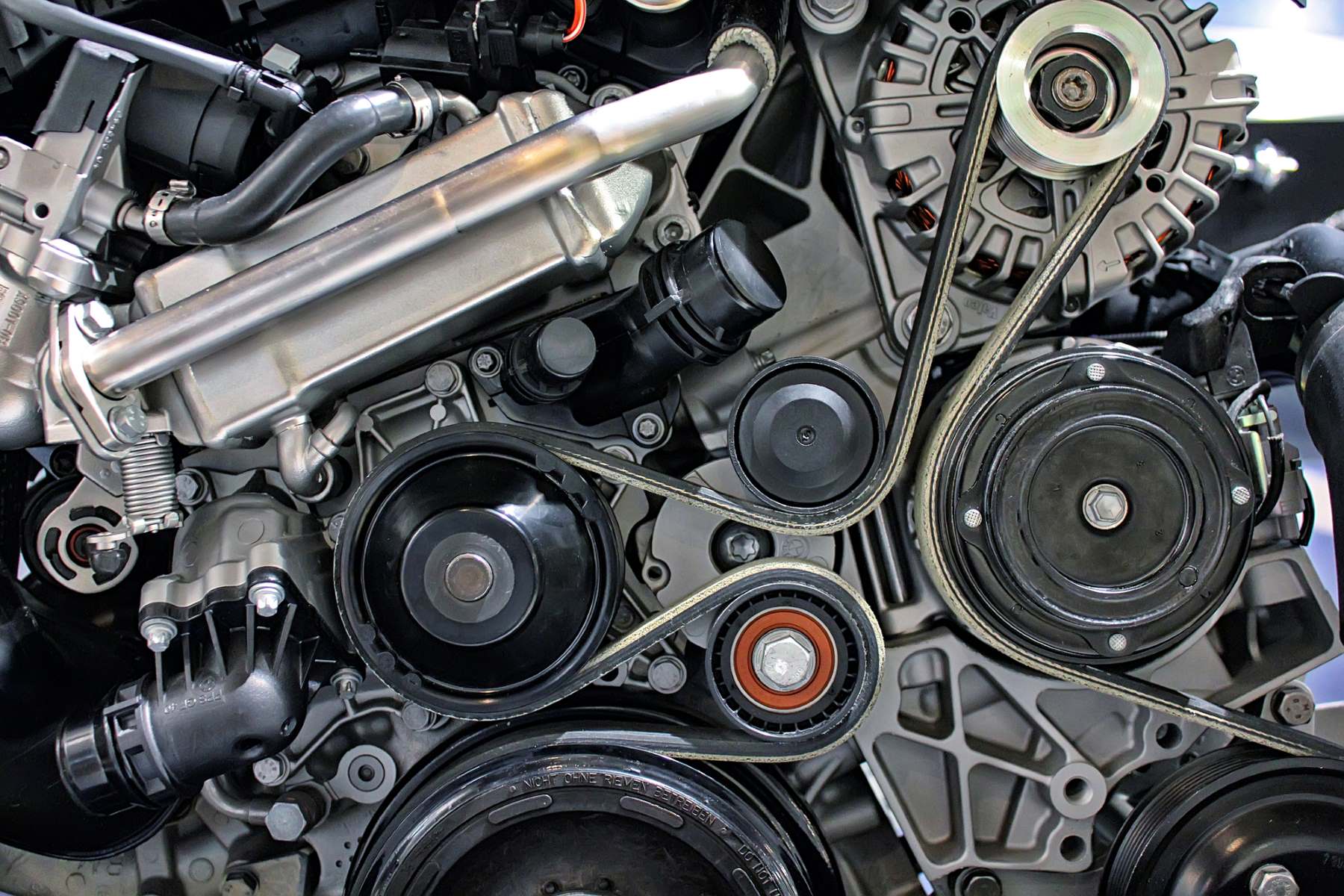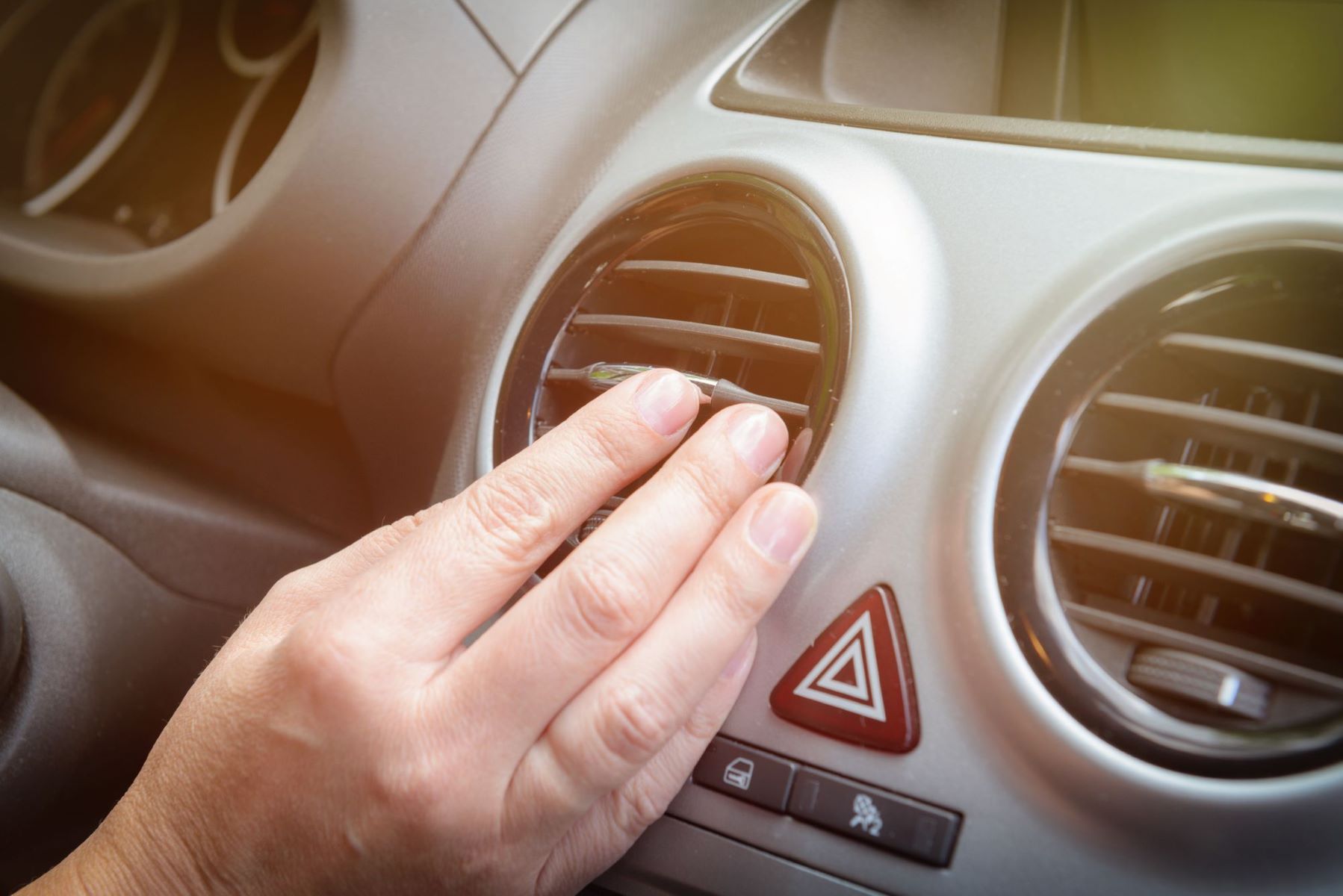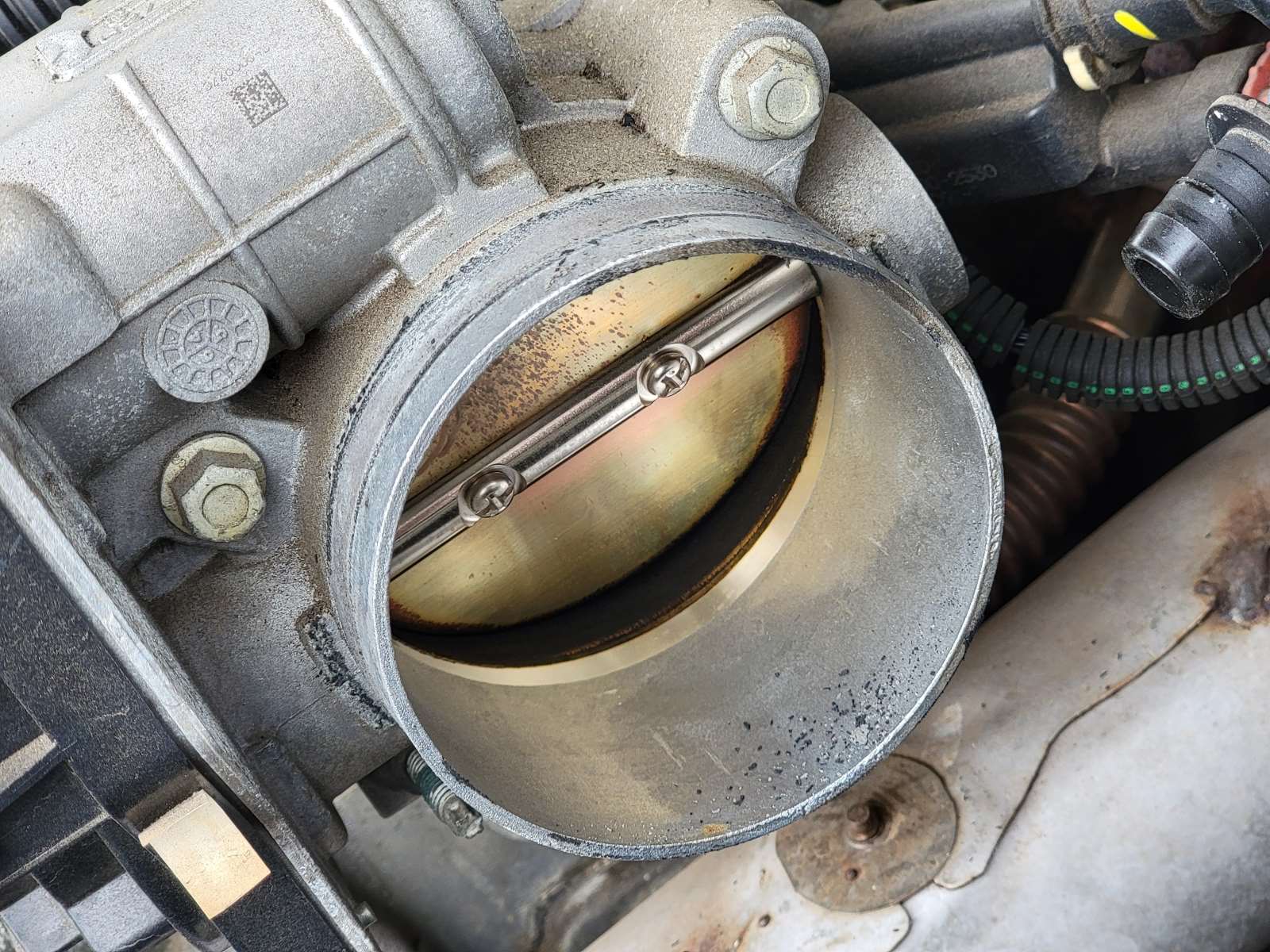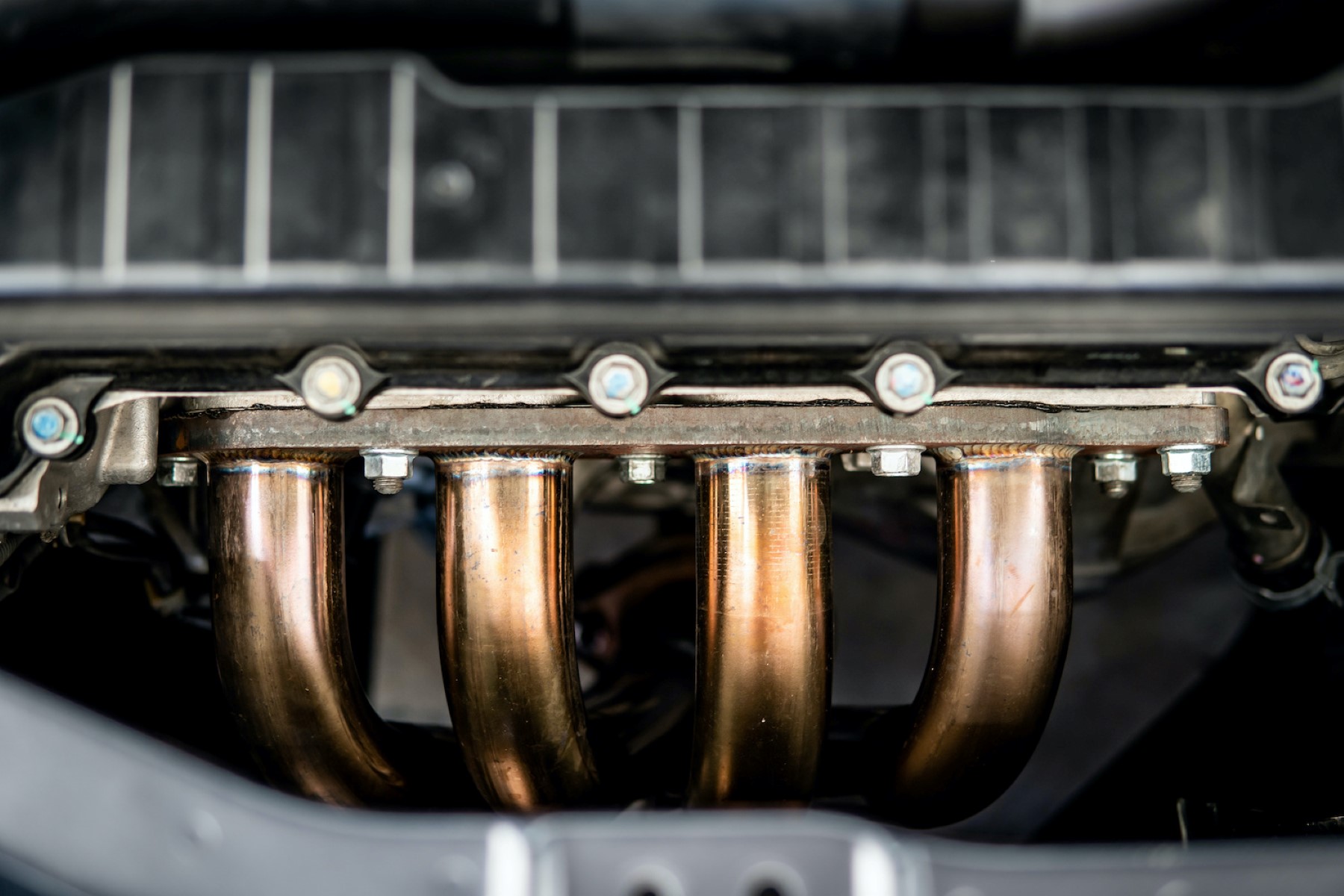Home>Automotive>How To Make Your Car AC Colder


Automotive
How To Make Your Car AC Colder
Published: March 4, 2024
Learn how to make your car AC colder with these automotive tips and tricks. Keep your vehicle cool and comfortable all summer long.
(Many of the links in this article redirect to a specific reviewed product. Your purchase of these products through affiliate links helps to generate commission for Regretless.com, at no extra cost. Learn more)
Table of Contents
Introduction
Ensuring that your car's air conditioning (AC) system is functioning optimally is crucial, especially during scorching summer months. A well-maintained AC not only keeps you comfortable during your drives but also contributes to a safer and more enjoyable driving experience. However, over time, your car's AC system may lose its cooling efficiency, leaving you sweltering in the heat. Fortunately, there are several steps you can take to make your car's AC colder and more effective.
In this comprehensive guide, we will explore various methods to enhance the cooling performance of your car's AC system. From simple maintenance tasks to professional inspections, these steps will help you achieve a refreshing and comfortable interior climate, even on the hottest days. By following these recommendations, you can ensure that your car's AC operates at its peak performance, providing you with a cool and pleasant driving environment.
Let's delve into the essential strategies for optimizing your car's AC system, allowing you to enjoy a refreshing and comfortable ride regardless of the outside temperature.
Check and Replace the Cabin Air Filter
The cabin air filter plays a crucial role in maintaining the air quality inside your car's cabin and ensuring the optimal performance of the AC system. Over time, the filter can become clogged with dust, pollen, and other airborne particles, hindering the airflow and reducing the cooling efficiency of the AC. Therefore, regularly checking and replacing the cabin air filter is essential for maximizing the cooling capacity of your car's AC system.
To begin, locate the cabin air filter housing, which is typically situated behind the glove compartment or under the dashboard. Refer to your vehicle's manual for specific instructions on accessing the filter. Once you have located the filter, inspect it for any visible signs of dirt, debris, or clogging. A clogged filter may appear dark or gray due to the accumulation of contaminants.
If the filter appears dirty or clogged, it is advisable to replace it with a new, high-quality cabin air filter. Most modern vehicles are equipped with easily replaceable cabin air filters that can be swapped out without the need for specialized tools. When purchasing a replacement filter, opt for a filter that meets the manufacturer's specifications to ensure compatibility and optimal performance.
After removing the old filter, take a moment to clean out any debris or dust that may have accumulated in the filter housing. This simple step can prevent contaminants from entering the AC system and ensure unrestricted airflow into the cabin.
Installing the new cabin air filter is a straightforward process that involves inserting the filter into the housing according to the manufacturer's instructions. Ensure that the filter is securely in place and that the housing is properly sealed to prevent air leaks.
By routinely checking and replacing the cabin air filter, you can significantly improve the airflow and air quality inside your car's cabin while enhancing the cooling efficiency of the AC system. This simple maintenance task can contribute to a more comfortable and enjoyable driving experience, especially during hot weather.
Incorporating this practice into your regular vehicle maintenance routine will help ensure that your car's AC consistently delivers cooler air, allowing you to stay refreshed and comfortable on the road.
Inspect and Clean the Condenser
The condenser is a vital component of your car's air conditioning (AC) system, responsible for dissipating heat and converting refrigerant gas into a liquid state. Over time, the condenser can become clogged with dirt, debris, and other contaminants, hindering its ability to efficiently release heat and causing a decline in the AC system's cooling performance. Therefore, inspecting and cleaning the condenser is essential to ensure optimal AC functionality and cooler air output.
To begin the inspection process, locate the condenser, which is typically positioned at the front of the vehicle, in front of the radiator. The condenser resembles a series of thin, parallel tubes with fins that facilitate heat dissipation. Inspect the condenser closely for any visible signs of dirt, debris buildup, or damage. Accumulated debris can restrict airflow and impede the heat exchange process, leading to reduced cooling efficiency.
Once the condenser inspection is complete, it's time to proceed with the cleaning process. Start by gently removing any visible debris, such as leaves, insects, or dirt, from the surface of the condenser. A soft-bristled brush or compressed air can be used to dislodge and remove stubborn debris without causing damage to the delicate fins.
Next, it's important to thoroughly clean the condenser to remove accumulated dirt and grime. A mild detergent or specialized condenser cleaner can be used in conjunction with a gentle stream of water to wash away the buildup. Carefully spray water through the condenser from the engine side to the front, ensuring that the water pressure is not too high to avoid bending the fins. This process helps dislodge and flush out trapped debris, restoring the condenser's ability to efficiently release heat.
After cleaning, allow the condenser to air dry completely before reinstalling any protective covers or panels. It's crucial to ensure that the condenser is completely dry to prevent moisture-related issues that could affect its performance.
Regularly inspecting and cleaning the condenser is a proactive measure that can significantly enhance the cooling efficiency of your car's AC system. By maintaining a clean and unobstructed condenser, you can promote optimal heat dissipation and refrigerant condensation, resulting in cooler air output and a more comfortable driving experience, especially in hot weather conditions.
Incorporating this maintenance task into your regular vehicle care routine can help maximize the effectiveness of your car's AC system, ensuring that you stay cool and comfortable on the road, regardless of the outside temperature.
Check and Refill Refrigerant Levels
The refrigerant in your car's air conditioning (AC) system is responsible for absorbing and releasing heat, ultimately cooling the air that circulates into the cabin. Over time, refrigerant levels can deplete due to minor leaks or natural evaporation, leading to a decline in the AC system's cooling capacity. Therefore, regularly checking and refilling the refrigerant levels is essential to ensure that your car's AC operates at peak performance, delivering refreshing and cool air during your drives.
To begin, it's important to locate the low-pressure service port on the AC system. The service port is typically identifiable by its distinct valve and is connected to the refrigerant lines. Refer to your vehicle's manual for the precise location of the service port, as it may vary depending on the make and model of your car.
Once you have located the service port, it's time to assess the refrigerant levels. This can be accomplished using a pressure gauge specifically designed for automotive AC systems. Attach the pressure gauge to the service port and take note of the pressure reading. A lower than normal pressure reading may indicate a low refrigerant level, signaling the need for a refill.
Before proceeding with the refill, it's crucial to verify the type of refrigerant required for your vehicle's AC system. Most modern vehicles utilize R-134a refrigerant, while older models may use R-12. It's imperative to use the correct type of refrigerant to ensure compatibility and optimal performance.
With the appropriate refrigerant on hand, it's time to refill the AC system. Start by ensuring that the engine is running and the AC is turned on at its maximum cooling setting. This facilitates the circulation of refrigerant through the system, allowing for an accurate refill.
Carefully connect the refrigerant canister to the service port, following the manufacturer's instructions to prevent leaks and ensure a secure connection. Slowly introduce the refrigerant into the system, periodically checking the pressure gauge to monitor the pressure levels. It's essential to avoid overfilling the system, as this can lead to inefficiencies and potential damage.
As the refrigerant is introduced, observe the pressure gauge for any fluctuations and ensure that the pressure stabilizes within the recommended range. Once the pressure reaches the optimal level, disconnect the refrigerant canister and securely reseal the service port.
By regularly checking and refilling the refrigerant levels in your car's AC system, you can uphold its cooling efficiency and ensure a consistently comfortable driving environment. This proactive maintenance practice contributes to a refreshing and enjoyable driving experience, allowing you to stay cool and comfortable, even in the sweltering heat.
Incorporating this task into your routine vehicle maintenance regimen will help you maintain optimal AC performance, ensuring that you can rely on your car's AC to deliver cool and refreshing air whenever you hit the road.
Inspect and Clean the Evaporator
The evaporator is a critical component of your car's air conditioning (AC) system, responsible for absorbing heat from the air and cooling it before circulating it into the cabin. Over time, the evaporator can accumulate dust, dirt, and other contaminants, potentially hindering its ability to efficiently cool the air. Therefore, inspecting and cleaning the evaporator is essential to maintain the optimal performance of your car's AC system and ensure a consistently refreshing and cool interior climate.
To begin the inspection process, locate the evaporator, which is typically situated inside the HVAC (Heating, Ventilation, and Air Conditioning) housing, often found beneath the dashboard or behind the glove compartment. Accessing the evaporator may require removing panels or covers, so refer to your vehicle's manual for specific instructions tailored to your car's make and model.
Once you have gained access to the evaporator, visually inspect it for any signs of dirt, debris, or mold accumulation. The evaporator's fins and coils are particularly susceptible to collecting dust and grime, which can impede heat transfer and reduce the cooling efficiency of the AC system. If the evaporator appears dirty or contaminated, it's crucial to proceed with the cleaning process to restore its functionality.
Cleaning the evaporator involves using a specialized evaporator cleaner, which is designed to effectively dissolve and remove accumulated dirt and contaminants without causing damage to the delicate components. Before applying the cleaner, it's advisable to use a soft-bristled brush or compressed air to gently dislodge any loose debris from the evaporator's surface.
Once the loose debris has been cleared, carefully apply the evaporator cleaner according to the manufacturer's instructions. This typically involves spraying the cleaner onto the evaporator's coils and fins, allowing it to penetrate and dissolve the accumulated dirt and grime. After the cleaner has had sufficient time to work, use a gentle stream of water or compressed air to rinse away the dissolved contaminants, ensuring that the evaporator is thoroughly clean and free from residue.
After cleaning, allow the evaporator to air dry completely before reassembling any removed panels or covers. It's essential to ensure that the evaporator is completely dry to prevent moisture-related issues that could affect its performance.
Regularly inspecting and cleaning the evaporator is a proactive measure that can significantly enhance the cooling efficiency of your car's AC system. By maintaining a clean and unobstructed evaporator, you can promote optimal heat absorption and air cooling, resulting in a more comfortable driving experience, especially in hot weather conditions.
Incorporating this maintenance task into your regular vehicle care routine can help maximize the effectiveness of your car's AC system, ensuring that you stay cool and comfortable on the road, regardless of the outside temperature.
Read more: The Ultimate Guide To Car Makes
Check for Leaks in the AC System
Ensuring the integrity of your car's air conditioning (AC) system is paramount in maintaining its cooling efficiency. One of the key factors that can compromise the performance of the AC system is the presence of refrigerant leaks. Over time, the seals, hoses, and connections within the AC system may deteriorate, leading to potential leaks that can diminish the system's ability to cool the air effectively. Therefore, conducting regular checks for leaks in the AC system is crucial for preserving its optimal functionality and ensuring a consistently refreshing interior climate.
To initiate the leak detection process, it's essential to utilize a specialized leak detection kit designed for automotive AC systems. These kits typically include fluorescent dye, a UV light, and safety goggles. The fluorescent dye is added to the AC system through the low-pressure service port, where it circulates along with the refrigerant. In the event of a leak, the dye escapes through the compromised area and becomes visible under UV light, allowing for precise identification of the leak source.
After adding the fluorescent dye to the AC system, it's important to run the AC for a sufficient duration to ensure that the dye has circulated throughout the system. This allows the dye to permeate the AC components and pinpoint any potential leaks. Once the dye has been circulated, the vehicle is inspected under UV light to detect the presence of fluorescent dye, indicating the location of the leak.
Careful examination of the AC system's components, including hoses, connections, and the compressor, is essential to identify any areas where the dye is visible. Common areas prone to leaks include the compressor shaft seal, O-rings, and hose connections. By meticulously inspecting these components under UV light, any leaks can be promptly identified and addressed.
Upon identifying the location of a leak, it's imperative to take the necessary steps to rectify the issue. Depending on the nature and severity of the leak, repairs may involve replacing seals, tightening connections, or addressing damaged components. It's crucial to enlist the expertise of a qualified automotive technician to conduct the repairs, ensuring that the AC system is restored to optimal working condition.
Regularly checking for leaks in the AC system is a proactive measure that can safeguard the cooling efficiency of your car's AC, allowing you to enjoy a consistently comfortable driving environment. By promptly addressing any identified leaks, you can uphold the performance of the AC system and mitigate potential issues that could compromise its functionality.
Incorporating this practice into your routine vehicle maintenance regimen will help you preserve the cooling capacity of your car's AC system, ensuring that you can rely on it to deliver refreshing and cool air, regardless of the outside temperature.
Use a Sunshade or Park in the Shade
During hot and sunny days, the interior of a parked car can quickly become a sweltering environment, making it uncomfortable for passengers and causing the air conditioning (AC) system to work harder to cool the cabin. To alleviate this issue and maintain a cooler interior temperature, utilizing a sunshade or parking in the shade can be highly effective.
A sunshade serves as a protective barrier, shielding the interior of the car from direct sunlight and reducing the heat buildup inside the cabin. When selecting a sunshade, opt for a reflective or insulating design that effectively blocks and reflects sunlight away from the windows. This helps to minimize the greenhouse effect, where solar radiation enters the car and becomes trapped, leading to a rapid increase in temperature. By deploying a sunshade, particularly on the windshield and rear window, you can significantly reduce the heat absorbed by the interior surfaces, thereby easing the strain on the AC system and promoting a cooler environment upon reentry.
Alternatively, parking in the shade offers a natural solution to mitigate the impact of direct sunlight on the car's interior. Seek out shaded areas such as under trees, in parking garages, or beneath structures that provide cover from the sun's rays. By parking in the shade, the amount of direct sunlight that penetrates the windows is diminished, resulting in a cooler initial cabin temperature and reducing the workload on the AC system when the car is in use. Additionally, parking in the shade helps to preserve the integrity of interior materials, such as upholstery and dashboard components, by minimizing prolonged exposure to intense sunlight, thereby contributing to the overall comfort and longevity of the vehicle's interior.
Incorporating the use of a sunshade or parking in the shade into your daily routine can have a tangible impact on the interior climate of your car, especially during hot weather. By proactively minimizing the effects of solar heat gain, you can create a more comfortable and inviting environment within the vehicle, while simultaneously easing the burden on the AC system. Whether at home, work, or out running errands, taking simple measures to shield your car from direct sunlight can make a notable difference in maintaining a cooler and more enjoyable driving experience.
By integrating these practices into your regular parking habits, you can optimize the effectiveness of your car's AC system and ensure a more pleasant and refreshing interior environment, even when faced with scorching temperatures.
Use a Car AC Vent Thermometer to Monitor Temperature
Monitoring the temperature of the air exiting your car's air conditioning (AC) vents is a practical and insightful way to assess the performance and cooling efficiency of the AC system. By utilizing a car AC vent thermometer, you can gain valuable insights into the actual temperature of the air being circulated within the cabin, allowing you to make informed adjustments and ensure a consistently refreshing and comfortable driving environment.
To begin, acquire a car AC vent thermometer designed specifically for automotive use. These thermometers are equipped with probes that can be inserted into the AC vents to measure the temperature of the air being emitted. When selecting a thermometer, opt for a model with a clear and easy-to-read display, ensuring that you can accurately observe and interpret the temperature readings.
Once you have obtained the thermometer, it's time to conduct a temperature assessment of the AC system. Start by ensuring that the vehicle is parked in a shaded or indoor location to prevent external heat from influencing the readings. With the engine running and the AC set to its maximum cooling setting, insert the thermometer's probe into one of the AC vents, allowing it to capture the temperature of the air as it exits the system.
As the thermometer captures the temperature readings, take note of the displayed values and compare them to the desired or optimal cooling range for your specific vehicle model. The optimal cooling range may vary depending on the ambient temperature and the AC system's capacity. Generally, the air exiting the vents should register within a comfortably cool range, typically between 35 to 55 degrees Fahrenheit (1.6 to 12.8 degrees Celsius).
If the temperature readings fall outside the expected range or indicate insufficient cooling, it may signify underlying issues with the AC system, such as low refrigerant levels, a clogged condenser, or a malfunctioning compressor. Conversely, excessively low temperatures may indicate overcooling, potentially stemming from an overcharged AC system or a faulty temperature control mechanism.
By regularly utilizing a car AC vent thermometer to monitor the temperature of the air exiting the vents, you can promptly identify deviations from the optimal cooling range and take proactive measures to address any potential issues. This proactive approach enables you to maintain the AC system's efficiency, ensuring that it consistently delivers refreshing and cool air, regardless of external conditions.
Incorporating the use of a car AC vent thermometer into your routine vehicle maintenance routine empowers you to stay attuned to the performance of your car's AC system, allowing you to promptly address any deviations from the optimal cooling range and uphold a comfortable and enjoyable driving experience.
Conclusion
In conclusion, maintaining a well-functioning and efficient air conditioning (AC) system in your car is essential for ensuring a comfortable and enjoyable driving experience, particularly during hot weather. By implementing the strategies outlined in this guide, you can optimize the cooling performance of your car's AC system and create a consistently refreshing interior climate.
Regularly checking and replacing the cabin air filter is a fundamental step in promoting unrestricted airflow and maintaining air quality within the cabin. This simple maintenance task contributes to the overall efficiency of the AC system, ensuring that it delivers cooler and cleaner air to the occupants.
Inspecting and cleaning the condenser and evaporator are proactive measures that facilitate optimal heat dissipation and refrigerant condensation, resulting in cooler air output and a more comfortable driving experience, especially in hot weather conditions. By keeping these components free from dirt and debris, you can maximize the cooling capacity of the AC system.
Monitoring and refilling refrigerant levels, as well as checking for leaks in the AC system, are crucial practices that help uphold the cooling efficiency of the AC system. By promptly addressing any identified issues, you can ensure that the AC system operates at peak performance, delivering refreshing and cool air during your drives.
Furthermore, utilizing a sunshade or parking in the shade serves as a practical approach to minimize the impact of solar heat gain, thereby reducing the workload on the AC system and maintaining a cooler interior temperature. These simple yet effective measures contribute to a more comfortable and inviting environment within the vehicle.
Finally, employing a car AC vent thermometer to monitor the temperature of the air exiting the vents enables you to promptly identify deviations from the optimal cooling range and take proactive measures to address any potential issues. This proactive approach empowers you to maintain the AC system's efficiency, ensuring that it consistently delivers refreshing and cool air, regardless of external conditions.
By integrating these strategies into your routine vehicle maintenance regimen, you can optimize the effectiveness of your car's AC system, ensuring a more pleasant and refreshing interior environment, even when faced with scorching temperatures. Ultimately, these efforts culminate in a consistently comfortable and enjoyable driving experience, allowing you to stay cool and refreshed on the road.














